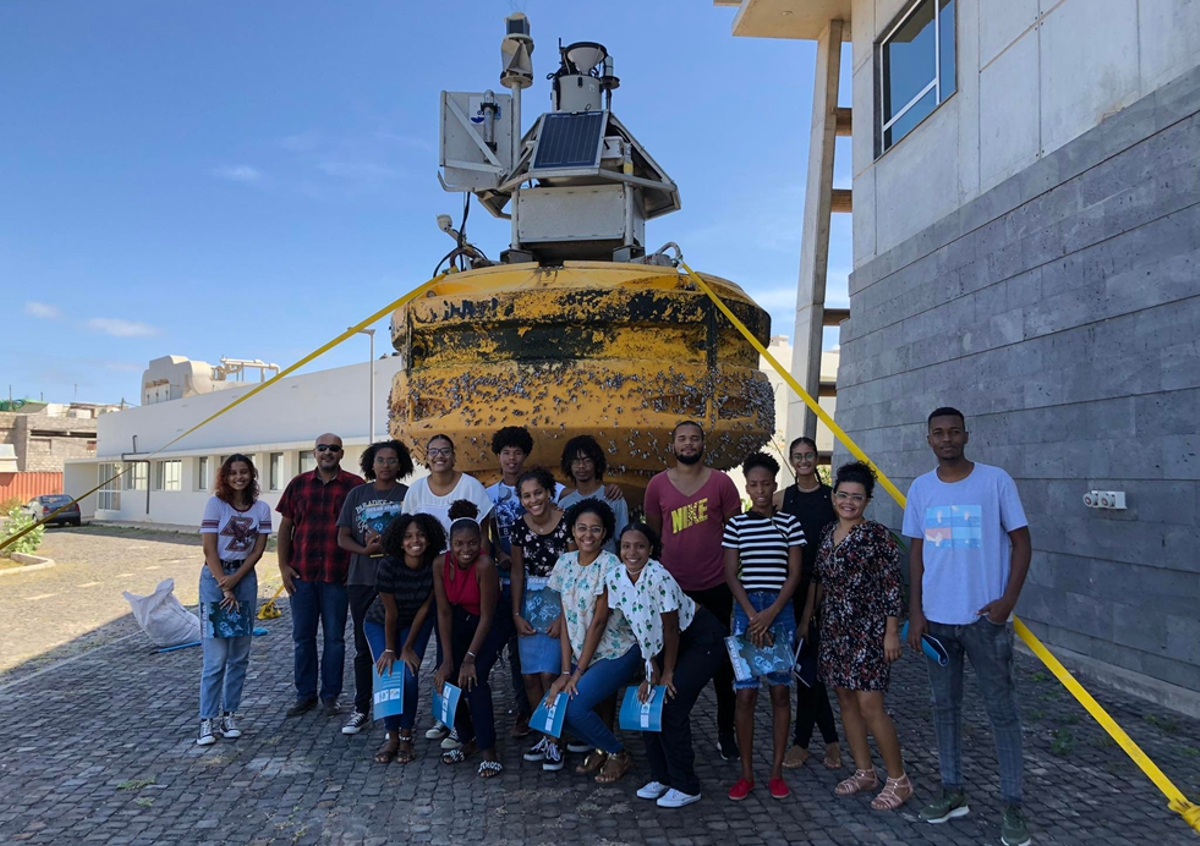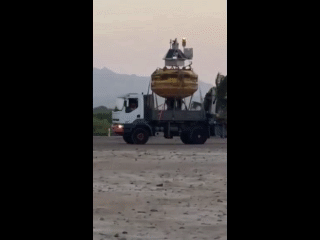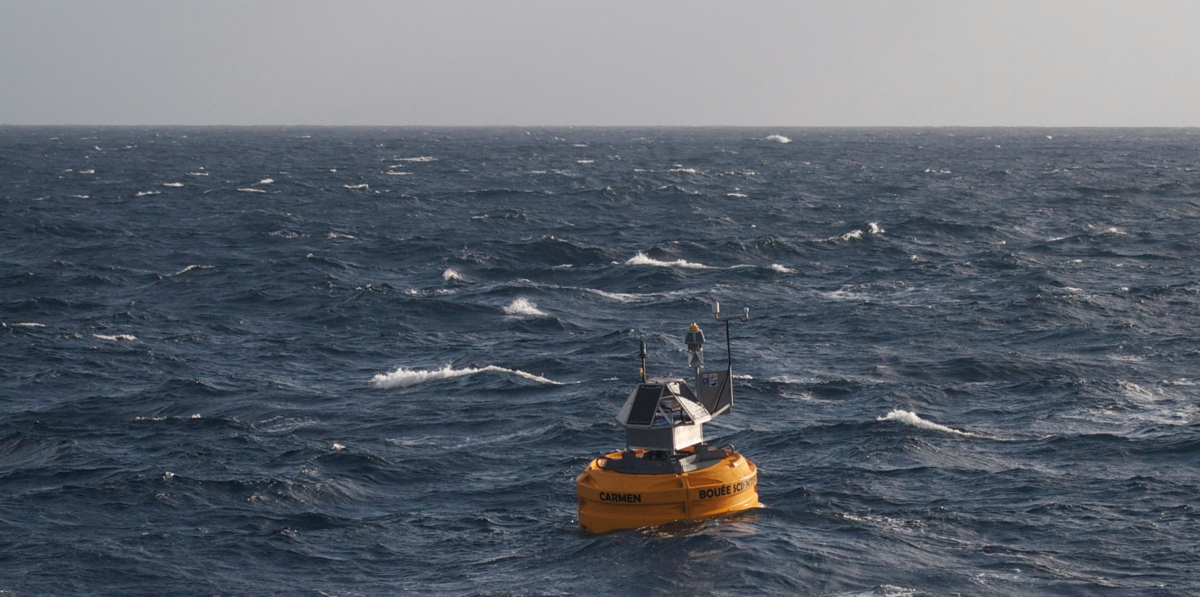
In November 2013, three dust-collecting buoys were deployed between northwest Africa and the Caribbean to monitor transport and deposition of Saharan dust. The three buoys were named after the three PhD students in the dust team: Carmen (Friese), Michelle (van der Does) and Laura (Korte). All students wrote very nice PhD theses and may proudly call themselves PhD. After the project ended in 2018, the dust monitoring was continued at two stations at the eastern side of the Transatlantic transect with buoy Carmen at the sediment-trap station off Cape Blanc, Mauritania, which has been maintained by the German team of MARUM colleagues in Bremen and buoy Laura at the high-resolution sediment-trap station M1 south of the Cape Verde Islands. See the many blogs that have been written about the joint ship expeditions that have been undertaken already.
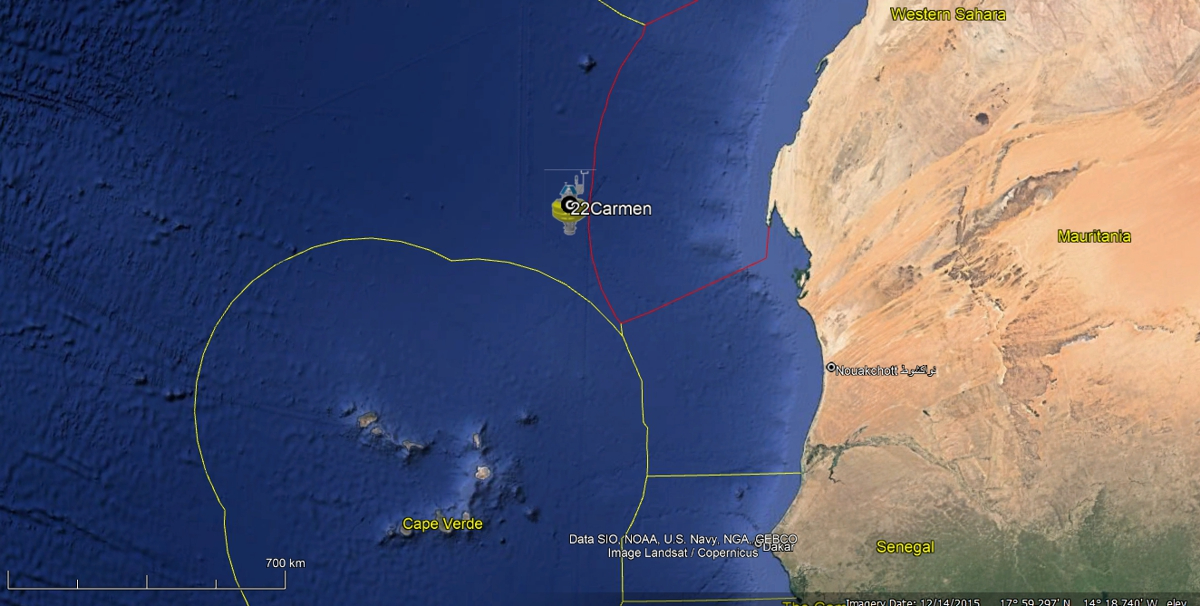
Twice per day we get updates from the buoys through the iridium-satellite connection. This way, we know about the meteorological conditions at the sampling stations, the buoys' positions, their battery and filter status etc. Plots of the twice-daily positions nicely show the degree of freedom the buoys have to move in and how their position is determined by the northeastern Trades, blowing the buoys to the (south)westernmost position that their anchor lines allow them.
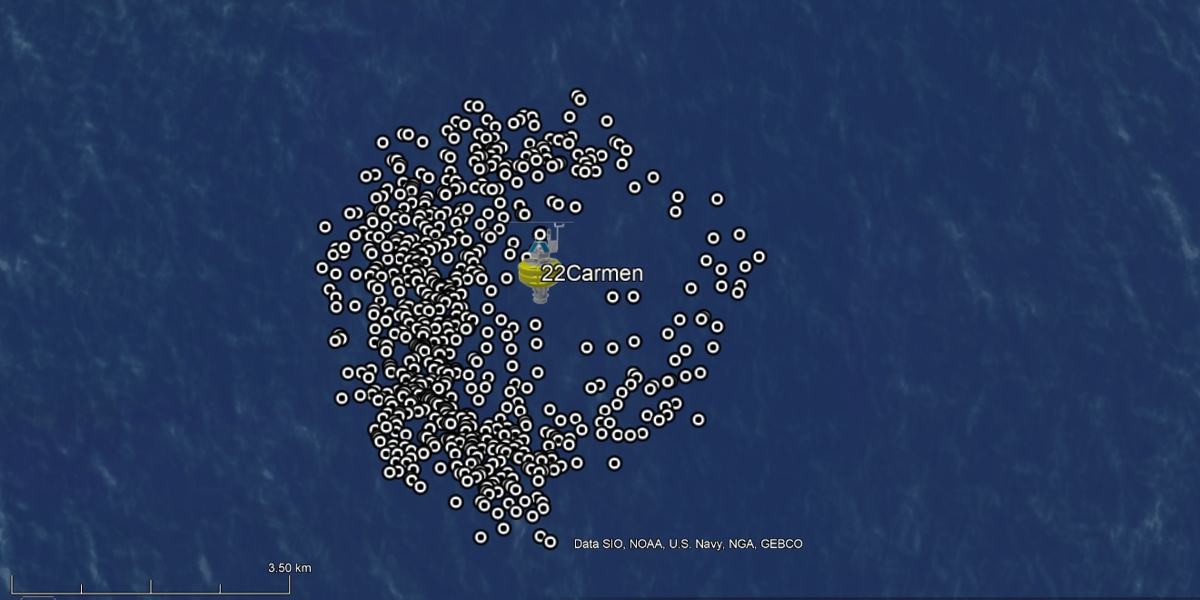
By mid October this year, buoy Carmen decided to take some more freedom; the eMail messages showed that she had somehow come off her mooring line and started drifting in the Canary Current.
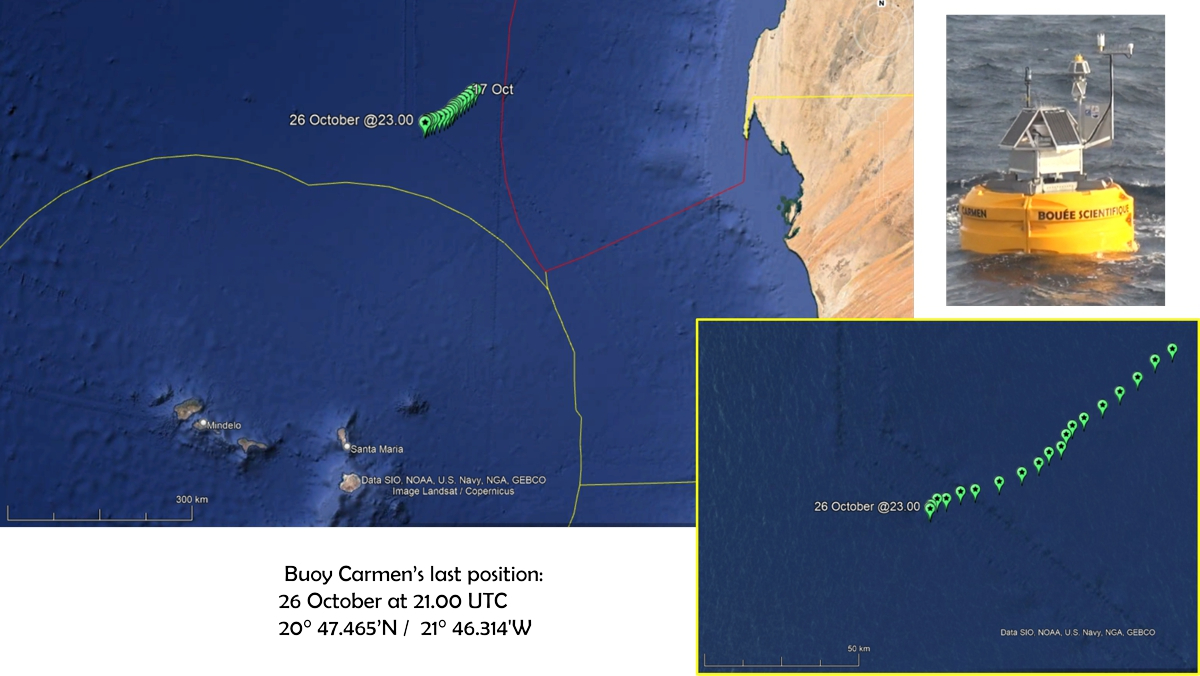
Fortunately, British colleagues onboard RRS Discovery would pass by her drifting path and were so generous as to spend some of their precious time at sea to recover the drifting buoy.
From NIOZ, we kept sending the updates on buoy Carmen's position, so that Master Robert Ovenden and his officers could direct the ship towards the runaway buoy. On deck she may be quite impressive but on the open ocean, she may be quite hard to spot!
We were quite relieved when we received word from the bridge that the buoy was found and even more so when we heard that the crew on deck managed to recover her safely!
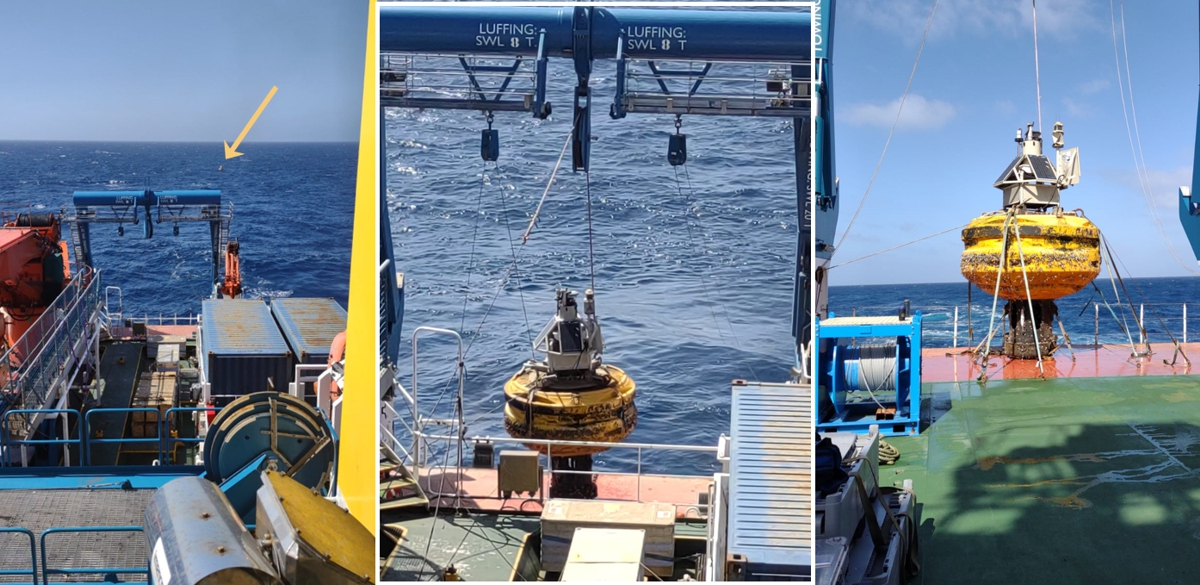
After only a few hours, the RRS Discovery could continue her transit to Mindelo, where the buoy was put on the shore. Here she was picked up by staff of the ANV (Agencia Nacional de Viagens) and OSCM (Ocean Sciences Center Mindelo) and transported to the OSCM premises. The ride from the harbour through town drew quite some attention!
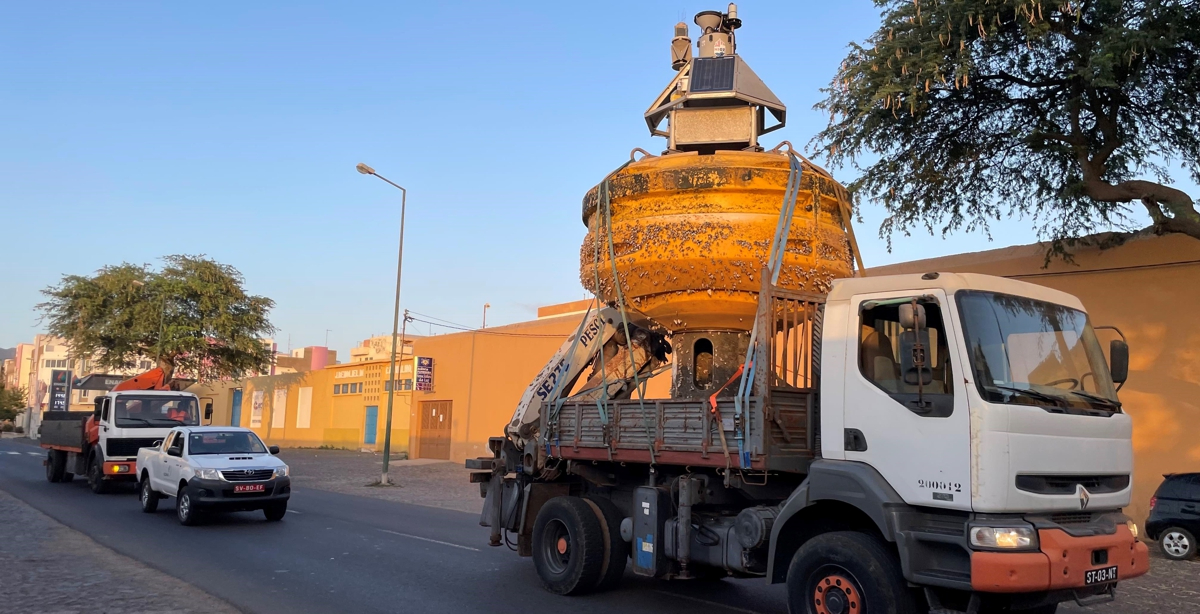
Finally, Carmen could be delivered at the OSCM, where she was secured safely. The flasher on the buoy that is meant to draw attention from passing ships is still working but the risk of being run over by a ship has now diminished to a minimum....
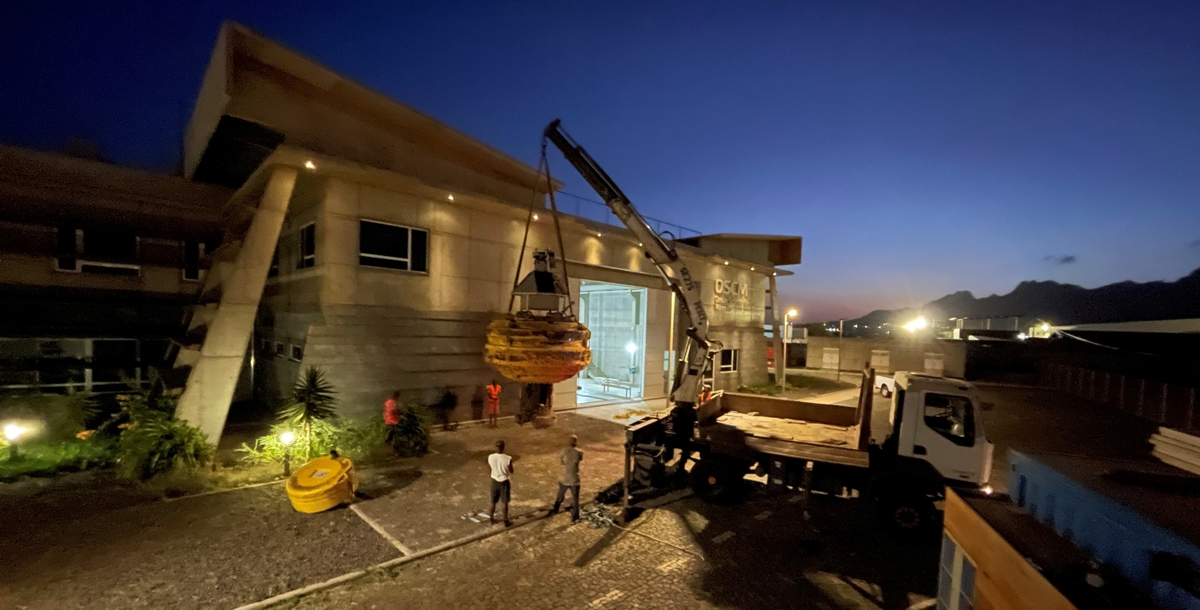
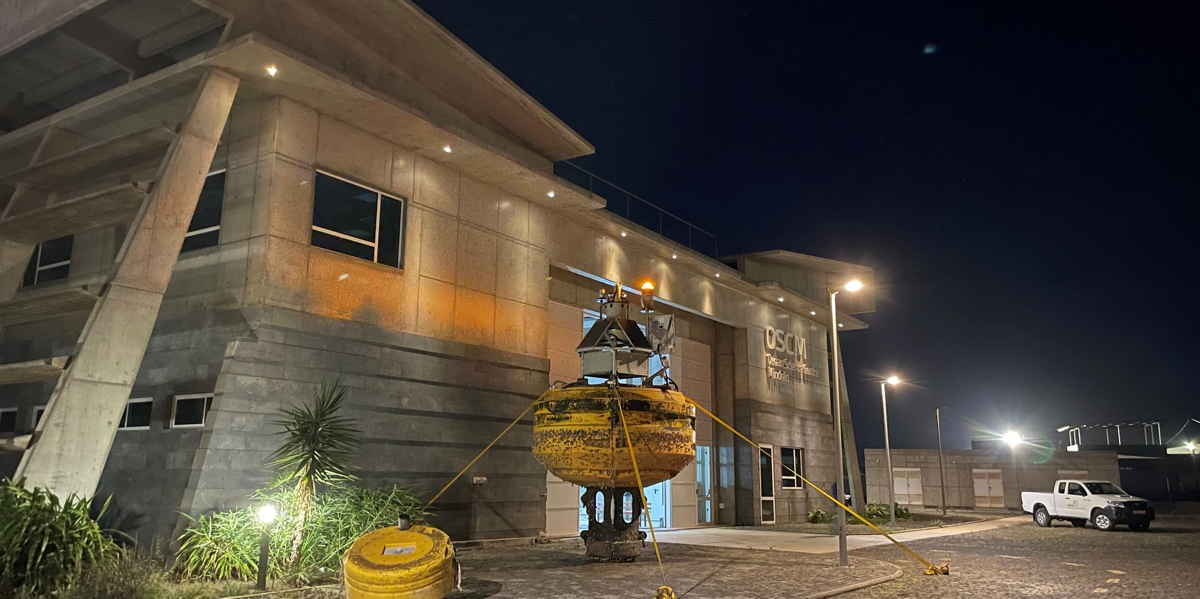
In March 2023 we are hoping to pick up buoy Carmen from the OSCM, 'harvest' all the data and samples that she collected, service her and put her back to work off Cape Blanc.
Until then she is quite a sight at the OSCM and visited by many scientists and other curious people!
